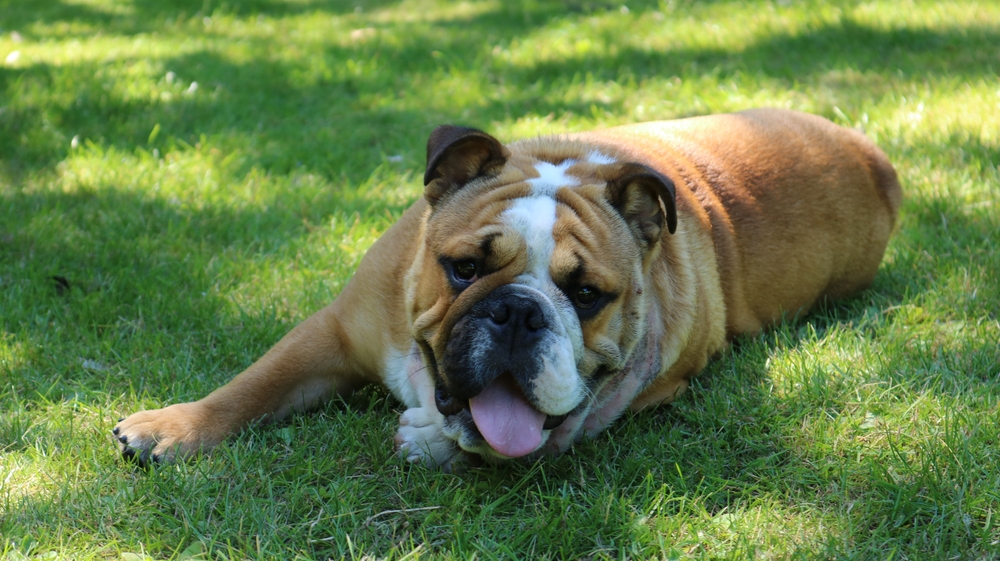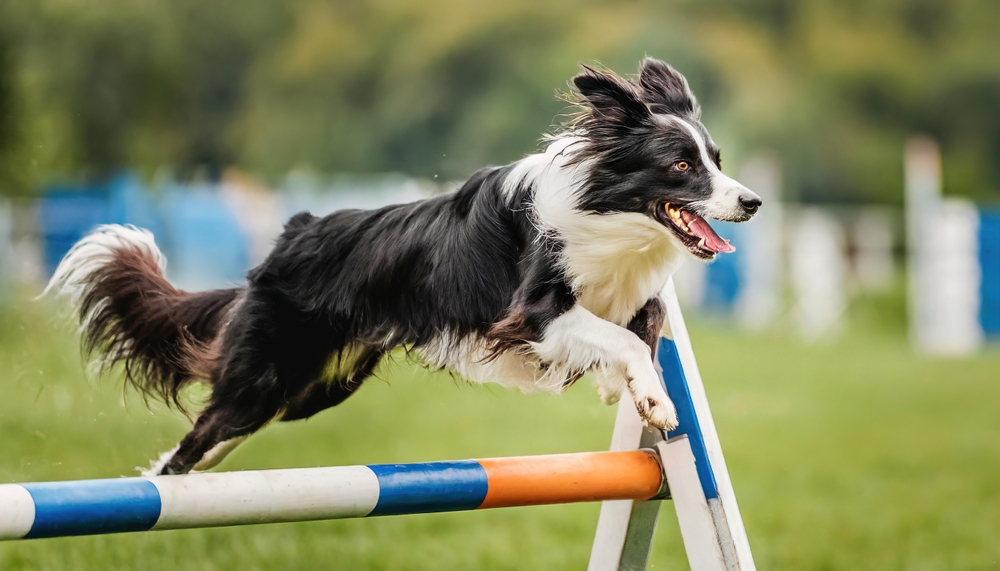Your dog will benefit greatly from regular exercise and movement. The correct exercise choices keep them healthy, prevent obesity, and reduce behavioral problems. However, not all dogs are the same, and different breeds and those with different health levels need varying exercises. Understanding your four-legged friend’s breed-specific requirements can help you provide the best exercise regimen for their health and happiness. Our Livingston Veterinary Hospital team’s guide will help you determine the appropriate exercise for your furry companion.
Exercise options for high-energy dog breeds
Sporting or herding breeds, such as border collies, Australian shepherds, and Siberian huskies, must burn off excess energy. These dogs are bred to be on the go and require vigorous exercise to stay mentally and physically fit. They thrive in environments with plenty of space to run and play and your goal should be one to two hours of intense daily activity.
Suggested activities for high-energy breeds include:
- Long runs or jogs
- Agility courses
- Fetching games
- Hiking
- Competitive sports
Exercise options for moderate-energy dog breeds
Moderate-energy pups need to be active but do not require the same intensity and duration of exercise as high-energy breeds. Labrador retrievers, boxers, and standard poodles are examples of these breeds. Moderate-energy dogs enjoy a mix of activities and do well with at least 30 minutes to an hour of active walking or playing each day, balancing intensity with rest.
Suggested activities for moderate-energy dogs include:
- Daily 30- to 60-minute walks
- Play sessions in the yard, including Frisbee or fetch with a ball
- Supervised swimming
- Hiking trails under seven miles
Exercise ideas for low-energy dog breeds
Some dog breeds, including brachycephalic breeds such as pugs and bulldogs, have exercise limitations because of their inherited respiratory issues. French bulldogs, basset hounds, and shih tzus are also low-energy breeds, who are more sedentary, but still need short bursts of activity to keep them healthy.
Suggested activities for low-energy breeds include:
- Short, leisurely walks
- Indoor play sessions
- Gentle playtime with toys
- Treat-dispensing puzzles
Exercise options for working dog breeds
Working breeds, such as German shepherds, rottweilers, and Belgian malinois, are often used in roles that require strength, agility, and stamina, and benefit from activities that challenge their physical and mental capabilities. These dogs require not only focused exercise for one to two hours each day but also need challenges.
Suggested activities for working breeds are:
- Obedience training
- Agility training
- Trick training
- Competitive sports
- Advanced fetch games
Exercise options for toy-breed dogs
You may be fooled into thinking your small- or toy-breed dog doesn’t need exercise, but they do. Many toy breeds, such as Chihuahuas, Pomeranians, and Maltese, need regular exercise to prevent obesity and stay healthy. They should have short walks and plenty of indoor playtime for 20 to 30 minutes per day, but be watched carefully, because they tire easily. Low-impact activities are best to avoid stressing their small frames.
Suggested activities for toy breeds can include:
- Short walks
- Indoor play with toys
- Gentle games of fetch
- Puzzle games
- Interactive toys
Dog age and health factors
Your pet’s age and current health play critical roles in determining their exercise intensity and duration. Puppies require short, frequent bursts of activity, and should avoid overexertion. Senior dogs need gentler exercises, including slow walks and swimming, to accommodate joint issues or reduced stamina. Dogs with health problems such as arthritis or respiratory issues may need exercise plans tailored by our veterinary team.
Climate considerations when exercising your dog
Extreme weather conditions can affect the duration and time of day that you exercise your pup. In hot weather, exercise your pet for short periods during early morning or late evening hours, while in cold weather, provide indoor activities to keep your dog active without risking their health. Assemble various indoor toys and activities to meet your dog’s exercise needs on hot or cold days.
When enough is enough: Fatigue signs in dogs

Any dog, including high-energy breeds, can succumb to fatigue during exercise. When your furry friend is tired, stop the exercise and allow them to rest and drink water to recuperate. Fatigued dogs are at greater risk of injury, so know your dog’s signals when they have had enough.
Fatigue signs include:
- Sitting down often
- Refusing to move
- Panting more
- Disinterest in activity
- Seeking shade
- Restlessness
Determining the best exercise for your dog involves understanding their breed-specific needs, considering their age and health, and adapting to climate conditions. By tailoring your dog’s exercise regimen to their unique requirements, you can ensure they stay healthy, happy, and well-behaved. A well-exercised dog is a happy dog.
Contact our Livingston Veterinary Hospital team if you have questions about your dog’s exercise needs. We can help with an individualized exercise plan.







Leave A Comment